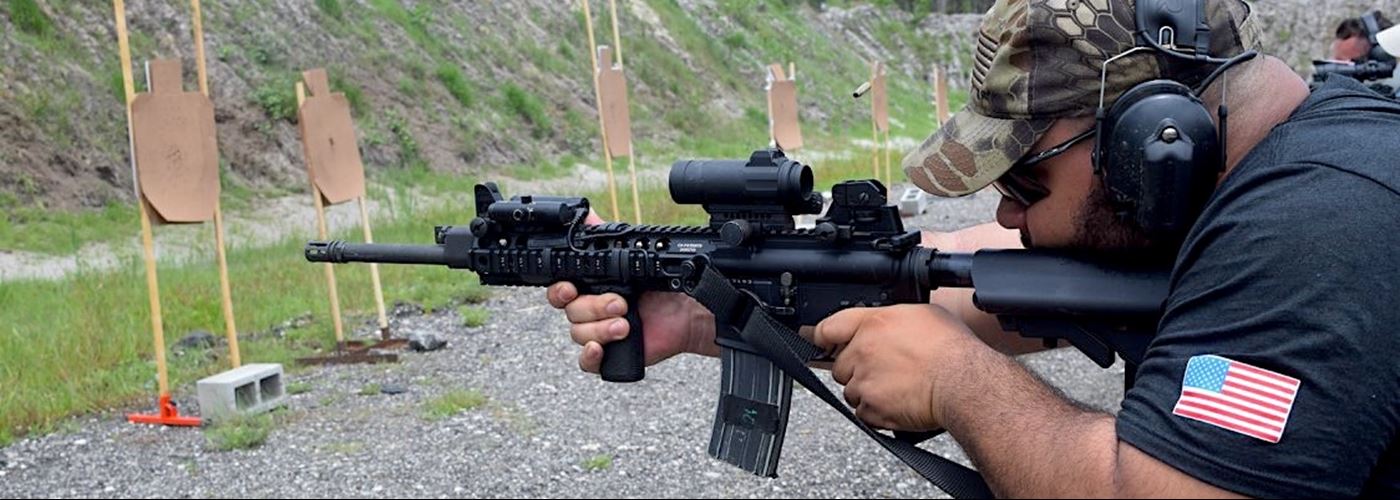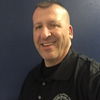
A range emergency action plan—frequently abbreviated to REAP—is an absolute must on any live fire shooting ranges. It is not a firearms safety lesson. REAP is for a post-event life-threatening emergency involving an anaphylactic, cardiac, hemorrhagic issue or similar event.
You should go over your range emergency action plan each day at the beginning of the range session or at any time when new instructional personnel come or go. In this post, I will outline the minimum material I cover before any live action shooting.
The 5 Ps of REAP
1. Plan
Create a laminated card that reminds you or any other instructor on how to conduct a REAP. Include all the information in a concise format, and have it written so that another instructor could pick it up and know exactly how to do it. Think of it as a lesson plan and update accordingly. “Oh shit, now what?” is not a good plan.
This is not elaborate info, but it will set the tone at the beginning of class. Students and firearms instructors will be reassured that you have a plan in place, because things CAN happen. This has a positive psychological effect on everyone.
2. Personnel
Begin by soliciting WHO has what medical experience in your detail. For example, if one shooter is a two-year EMT and the other a 17-year Navy Corpsman, give the primary medical task to the higher skill. Solicit skill sets of TCCC (Tactical Combat Casualty Care), EMT, MD, etc. and who is agreeable to provide front line care. Have at least two people assigned to front line care and a third if possible. Remember, that person might be you. Should your primary TCCC become the injured party, the secondary is now the primary and so forth. These people are your medics. Get verbal agreements that they understand and accept their roles.
The next people that you need to enlist are your communication transportation personnel. These people (choose 2 or 3) should have a cell phone on his or her person with good coverage OR be able to communicate by police radio or landline. If an emergency arises and the 911 system needs activated, the callers are the responsible parties to do so. They should be very familiar with the area and have a knowledge of ambulance routes and/or the landing of aircraft, the address of the range, GPS of the range and landing zone (LZ) if not the same.
REAP cards should contain means of egress and the nearest hospital and trauma center as people may be unfamiliar with the area. Prepare a separate card for each range location. Callers should state the following:
- The nature of the emergency
- What action has been taken (ex. “We applied tourniquet.”)
- Planned action (ex. “We are bringing him by car.”)
- Time stamps (ex. “The police car is 10 minutes out,” etc.)
3. Products
Make sure you have a first aid kit, trauma kit and AED. (I will go into more detail later on.) It is critical these kits are on-hand and immediately available. Having them in the trunk of a car is useless. They should be in plain sight on the range deck and visually recognizable. Show the actual kit to everyone during the REAP briefing.
Simply put, the first aid kit is self-serve and the trauma kit is not a toy. I personally put all my med stuff at the “control point,” which is the furthest usable yard line. This would be 25 on a pistol range, 50 for rifle, etc.
4. Police Vehicle/Civilian Vehicle
A marked police vehicle designated as the “grab and go evac” is best. If you’re on a civilian range, a large SUV, truck or van is best.
Assign two people who are familiar with the area to drive and assist. Have the car staged near the range with the keys in it, unlocked and unblocked. If you are without electronic communication or in a very remote area, a member induced vehicle evacuation and transport may be the best option.
5. Problems
Ask students if they have any existing medical conditions, allergies, medications and the like. Do this discreetly but honestly with the safety of everyone in mind. For example, you could ask them to list conditions, allergies and medications on their waiver before class.
Dehydration and heat-related emergencies on the range are real and frequent. Remember: Your range, your shooters, your job.
Have a First Aid Kit and More at the Range
The first aid kit (FAK) is typically a white metal box issued by the department or purchased at a retailer such as Sam’s Club. Either way, make sure it’s labeled as such so it can be easily identified.
The first aid kit will include all the essential medical supplies that will be used for non-serious injuries. These items can be accessed regularly to treat small scrapes, cuts and other minor injuries. This kit should be monitored on a regular basis to ensure that used items are replenished. This kit can be self-serve for students and instructors.
The trauma kit is typically a soft canvas bag that is red in color. Use an indelible black marker to write TRAUMA KIT on the front, back and sides of the box or bag so it can be easily identified. The trauma injury kit will include all of the essential medical supplies that are needed to treat serious trauma injuries such as hemorrhage control, deep lacerations, penetrating puncture wounds, gunshot wounds, sucking chest wounds and tension pneumothorax.
The trauma injury kit should ONLY be accessed for serious injuries and by personnel that have been properly trained in TCCC (Tactical Combat Casualty Care) or training of equivalent level.
An AED—automated external defibrillator—is not necessarily related to treating a gun shot. However, these devices can be a real lifesaver for a cardiac event.
Be Prepared
None of this has to be elaborate, but it at least needs addressed. While shooting range-related issues are rare, they do happen. We are around firearms so often that despite our best efforts, complacency creeps in.
I have heard all too often of a live round making its way into a classroom by an instructor or a negligent discharge from a nervous student. I know all too personally about how quick this can happen, as I was shot in the chest (vest) by a cadet in 2009. While I was totally fine, my team had my clothes cut off and checked by pale and fat laden body for other wounds. Despite being very scary, then funny being naked, it was reassuring that our plan worked.
Is your plan in place?
If you want to learn more about shooting range safety, read more from the ShootingClasses.com blog:
